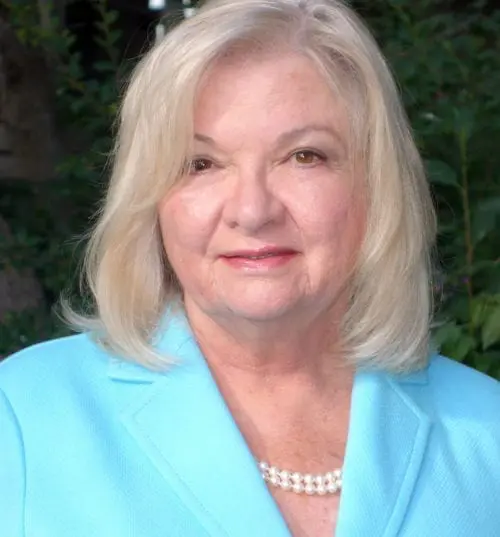
If you don’t know about universal design yet — making homes more accessible to people of all ages, sizes and physical abilities — you will soon.
Perhaps it’s the growing cadre of baby boomers or the number of families trying to accommodate granny as well as young children, but in discussions about housing, the phrase “universal design” is trending. It represents a shift in the way we think about homes and in the way they are designed and built.
“If we hadn’t had the recession, universal design might be as popular as green,” says Karen Kassik, owner of Home Accessibilities in Anchorage, Alaska, who was also one of the judges of the National Association of Home Builders’ Best in American Living Awards competition. As the economy bounces back, Kassik expects universal design to become “more popular and trendier.”
What is Universal Design?
Universal design has been around for decades, but ongoing initiatives — from aging in place to accessible design — have left the industry and consumers confused about what the concept means. Basically, universal design implies homes or rooms that can accommodate the needs of a wide range of ages, body shapes and abilities. “The diversity of the general population is immense. What universal design does is provide home designs that are inviting and convenient for the broadest spectrum,” says Bill Owens, an Ohio builder and remodeler who wears many hats. Owens is a trainer for the National Association of Home Builders’ Aging-in-Place certification program, a certified aging-in-place specialist, and also CEO of Better Living Design, a new nonprofit that promotes universal design.
“People have historically equated universal design with accessibility, and it does improve access, but it’s not the same thing,” explains Mary Jo Peterson, a certified kitchen designer from Brookfield, Conn., who specializes in universal design and aging in place. Unlike accessible design, which is often done for a particular client with a particular need, universal design doesn’t solve a specific problem. Instead, it enables anyone to use a space. “Whatever your abilities, your size or your age,” Peterson adds.
“Universal design is just smart design,” says Kassik. “And it allows visitability where a person with challenges can come into your home and be comfortable.”
A New Era of Universal Design
For most of us, even a mention of universal design is apt to conjure up a vision of hospital-like grab bars, but proponents say universal design is simply good design that is well thought out and visually pleasing. “To appeal to the mainstream market, it has to look good, have aesthetic appeal or it has to blend so well that most people just don’t see it,” says Owens.
Central to the concept is good planning, especially for new homes or renovations. Owens says sometimes a few extra feet can make a big difference, say, in the bathroom. Elevators are another classic example. They might be a costly addition in the future, but planning for one by stacking closets on two different floors isn’t. Other basics of universal design call for wider hallways and, for doors, 34- or 36-inch-wide openings and levers, rather than knobs. To accommodate wider openings in a bathroom or powder room, Peterson might use two pocket doors that telescope into the walls on each side.
Although Peterson works with builders, she says increasingly calls come from manufacturers who want to incorporate universal design into their products. Hardware manufacturer Häfele joined with two cabinet manufacturers and Jenn Air appliances to showcase universal design in their demonstration kitchens at the recent Kitchen & Bath Industry Show. “The essence of what we do is improve your interaction with your furniture. From all the little details like lighting inside cabinets to rollouts, hardware has a lot to do with universal design,” says Daniel Tripp, product marketing manager for Häfele.
The two show kitchens reflected different price points, but both were gorgeous. The smaller even incorporated three different counter heights, including a table that pulled out perpendicular to an island. From doors that telescoped back into a cabinet or slid sideways, universal design features were numerous. What struck attendees was the practically, rather than adaptability to specific needs.
Regarding kitchens, 35 percent of architects polled in a recent American Institute of Architects (AIA) design trends survey indicated universal design was growing in popularity. This number was close to the other top features: computer centers (47 percent), integration with family spaces (43 percent) and recycling centers (36 percent).
Universal Design Around the Home
In the bath, universal design is even more in demand, according to architects. “Accessibility into and around the bathroom is a growing concern for homeowners, particularly those who may be planning to remain in their current home as they age in place,” observed Kermit Baker, chief economist of AIA. Well over half of architects in AIA’s survey say universal design features are increasing popular in bathrooms. Here, generous showers with no-step thresholds might be indulgent, but they are also great example of universal design.
In addition, manufacturers have introduced more “comfort height” toilets. Peterson also suggests positioning an electrical outlet in the vicinity of toilets during construction to accommodate a potential upgrade to a model that incorporates a bidet or any of the other bells and whistles featured in the highest-performing new models. Some new toilets even include a nightlight. Similarly, it’s important to have a “comfort height” for countertops and sinks. Some new vanities incorporate a pull out step so children (or anyone who needs a boost) can better access the sink.
Increasingly universal design intersects with sustainability. Take LED lights, which 70 percent of architects responding to a recent American Institute of Architects design trends survey say are increasing in use. Not only do LEDs save energy, but this technology also allows for installation of lighting in drawers, cabinets, along countertops — almost any place that might benefit from illumination.
In other ways, building a new home with universal design elements can be considered green, according to Kassik because it requires less remodeling over the long term. “It is just smart design and it’s a good value. You can call it green, because you don’t have to tear it apart in 10 years to make it work for somebody else.”
The dynamics of an aging population is going to push universal design to the forefront. But proponents believe the tipping point will come when universal design becomes so beautiful and useful that it’s something we all want to have.

Camilla McLaughlin is an award-winning writer specializing in house and home. Her work has appeared in leading online and print publications, such as Yahoo! Real Estate, Unique Homes magazine and Realtor magazine. She has also freelanced for the Associated Press.
 Using Color in Your Home to Beat Winter Blahs
Using Color in Your Home to Beat Winter Blahs